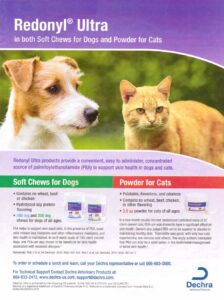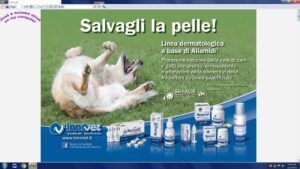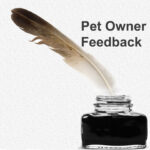Redonyl® Ultra
Ron Hines DVM PhD


Itchy dogs and how best to treat them have vexed veterinarians all over the world since the 1920s. That was when canines and cats replaced horses as a veterinarian’s primary source of income. The Wikipedia entry wasn’t particularly enlightening either, other than that I learned that PEA is an ammoniated fatty acid that has been proposed to have anti-inflammatory and anti-pain (nociceptive) properties. Switching to PubMed, I found that there are 888 palmitoylethanolamide (PEA) study entries – none of them of top quality. The claimed benefits of PEA range from its success in treating Alzheimer’s disease, depression, brain fog, osteoarthritis of the knee, hardening of the arteries (atherosclerosis), inflammatory bowel disease, endometriosis, Parkinson’s disease, decreased vitality, inflammation, and pain. Almost every article ends by stating, “More studies are warranted to assess the drug’s efficacy”. However, none of those “further studies” are ever performed. Another observation is that the vast majority of these positive articles are products of Italy. (read here) Not a single article of the many I read found a disease for which PEA was not proposed as being beneficial. Truly a wonder drug, similar to The Great Theriac.
Your body and your pet’s body naturally synthesize PEA from palmitic fatty acid. Palmitic acid makes up 21-30% of body fat. (read here) So a pet of normal weight is highly unlikely to be deficient in PEA. Commercially available PEA is usually manufactured from palm oil. It also occurs in moderate amounts in egg yolks, peanuts, soybean products and a variety of other vegetable oils. PEA appears to have no detectable toxicity – even at high doses (1000 mg/kg/day orally for 90 days in rats). (read here) PEA is readily available on Amazon.com and at health food stores.
A challenge in increasing body PEA level with oral supplements is that the compound barely dissolves in water (it is too lipophilic). To get around that, various methods are used to make the powdered PEA particles as small as possible (micronization). The smaller the particles, the more of their surface area is exposed to gastrointestinal absorption. (read here) One Italian study claimed that ultramicronized palmitoylethanolamide was beneficial to cats with flea allergies. (read here) Another claimed that it cured four lame horses. (read here)
Does Anyone In The United States Evaluate PEA-containing Products For Their Health Claims Or For Their Effectiveness?
No.
Medications to treat humans and pets in the United States are monitored by the FDA. But the FDA considers PEA to be a food, not a medicine. No different from apples, milk or peanut butter. They say that’s the USDA’s job. Consequently, the FDA only monitors products like these for dangerous contamination. The commonly used word for foods and dietary supplements that make veiled medical claims are nutraceuticals. To stay in the FDA’s good graces, the manufacturers of these products do not claim outright that any of them can cure or lessen any specific disease. When they stray over that line, as they commonly do, the FDA sends them a 483 warning letter. To avoid those letters, the nutraceutical companies use the word “support” e.g., kidney support, liver support, brain support, skin support, hair growth support, libido support, etc. If they used the words treat, cure, improve, lessens the symptoms of, etc. they would have to prove that the products they sell you actually do that. The patents listed in NAVC promo page ad are 6,548,550, 8,470,373 & 8,663,701. Patent 6548550 actually states that PEA (N-palmitoylethanolamide aka palmidrol) is an effective adjunct in treating eosinophilic granuloma in cats, as well as the horse keloids I mentioned earlier. It mentions that their product can be used topically, transdermally, as micro-enemas, creams, ointments, sprays, gels, and foams. US8,470,373 assigned to the Epitech Group, relates to their “ultra-micronization” process used to form their brand of PEA. US8663701B2/en also relates to their patent on the method that those PEA particles are made ultra-small <6 microns.

Is This Product Going To Benefit My Dog Or My Cat?
I don’t know. If you give Redonyl® Ultra to your dog or to your cat, and you see some improvement, please let me know. I’m sure many other pet owners who read this page would like to know too. If it didn’t seem to help, we would like to know that also. I will add your anonymous observations below:
None yet
You are on the Vetspace animal health website
Visiting the products that you see displayed on this website help pay the cost of keeping these articles on the Internet.




